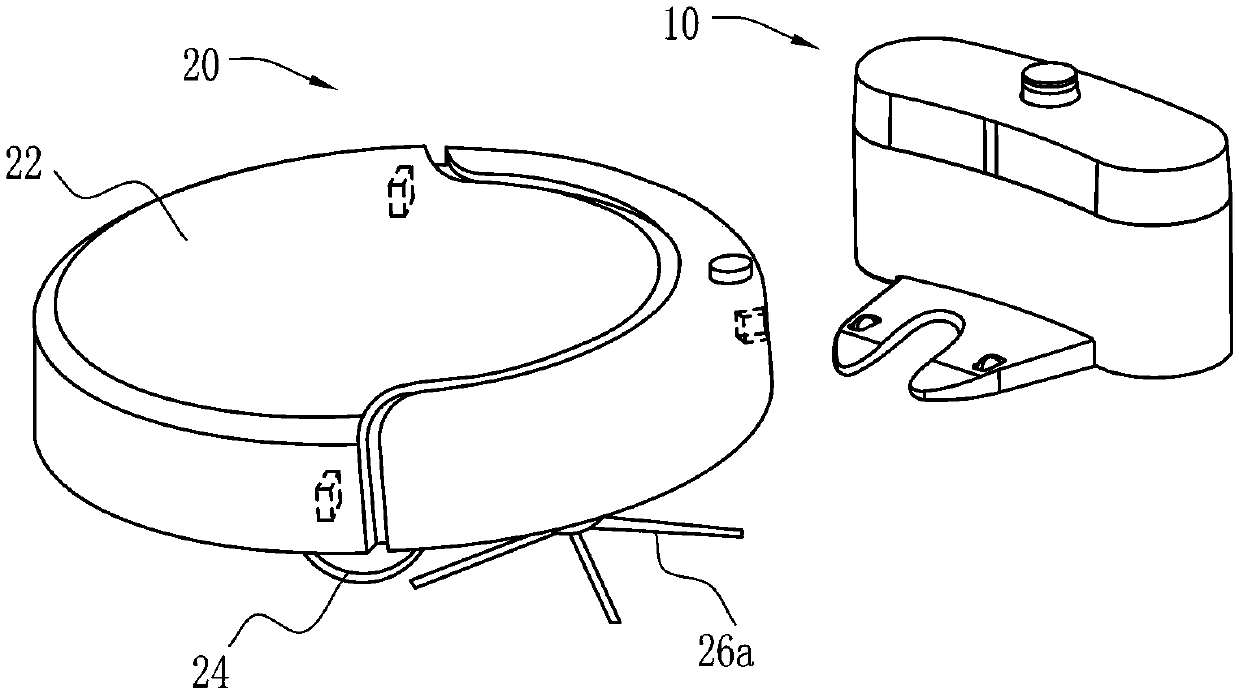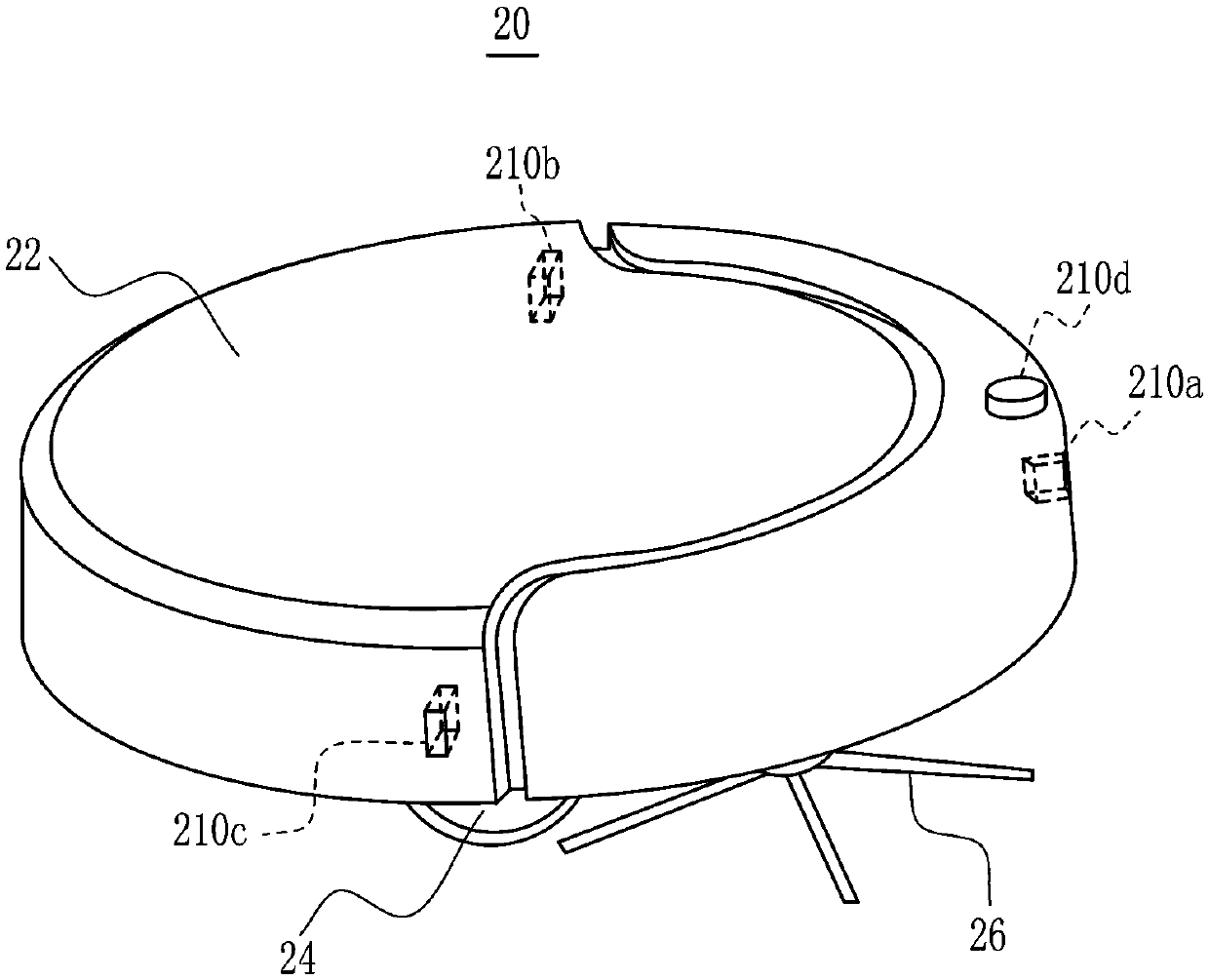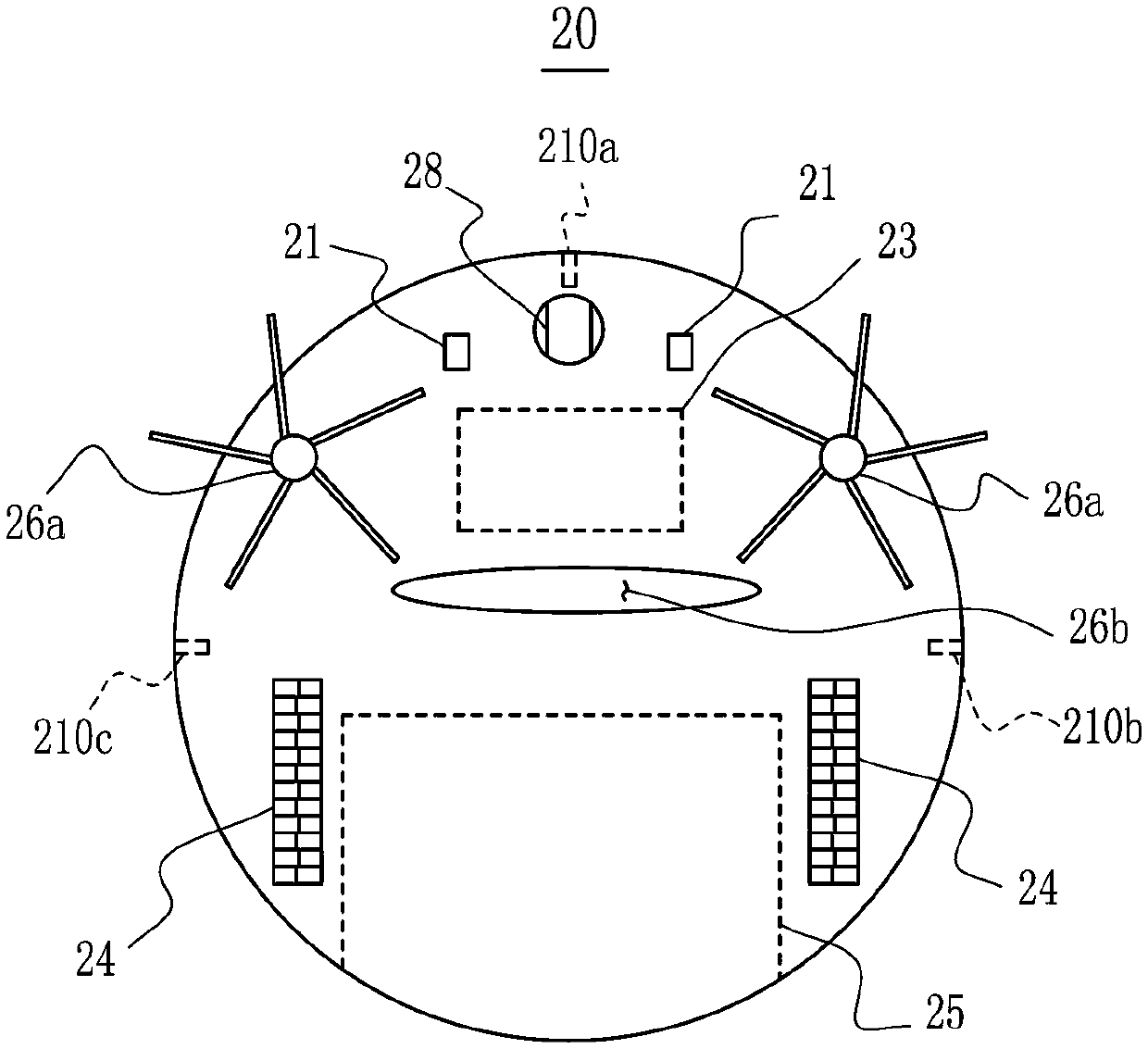Automatic docking system of robot
An automatic docking and robot technology, applied in the installation of vacuum cleaners, electrical equipment, cleaning equipment, etc., can solve the problems of long distance signals emitted by docking signals, increase power consumption and circuit complexity, and reduce recharge efficiency. The effect of simplifying the circuit, reducing robot misjudgment, and reducing power consumption
- Summary
- Abstract
- Description
- Claims
- Application Information
AI Technical Summary
Problems solved by technology
Method used
Image
Examples
Embodiment Construction
[0040] In order to make the object, technical solution and advantages of the present invention clearer, the present invention will be further described in detail below in conjunction with the accompanying drawings and embodiments.
[0041] The "robot" in the present invention generally refers to a device equipped with a rechargeable battery that can automatically or semi-automatically perform predetermined tasks, including household cleaning robots, monitoring robots, self-propelled mobile devices, etc. The present invention only refers to robot cleaners The technical solution of the present invention is described in detail as an example. Those skilled in the art should understand that the automatic docking system described in this embodiment can be applied to other robots or self-propelled mobile devices, and the docking purpose may include but not limited to the present invention Example detailed "charging".
[0042] see Figure 1 to Figure 3 . Such as figure 1 As shown i...
PUM
 Login to View More
Login to View More Abstract
Description
Claims
Application Information
 Login to View More
Login to View More - R&D
- Intellectual Property
- Life Sciences
- Materials
- Tech Scout
- Unparalleled Data Quality
- Higher Quality Content
- 60% Fewer Hallucinations
Browse by: Latest US Patents, China's latest patents, Technical Efficacy Thesaurus, Application Domain, Technology Topic, Popular Technical Reports.
© 2025 PatSnap. All rights reserved.Legal|Privacy policy|Modern Slavery Act Transparency Statement|Sitemap|About US| Contact US: help@patsnap.com



